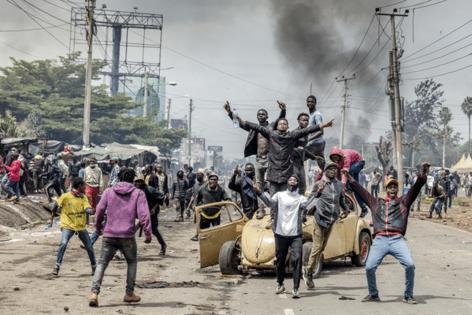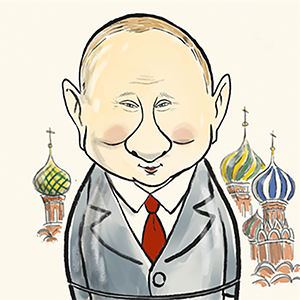Nairobi shuts down as Kenya police barricade city from protests
Published in News & Features
The streets of downtown Nairobi were deserted and many store fronts were soldered shut as workers and traders stayed away on fears that protests demanding the removal of President William Ruto may turn violent.
Kenyan police had already placed road blocks on all major thoroughfares into the central business district of the capital before daybreak, keeping out thousands of mainly youthful demonstrators that had been expected to rally in the city center.
At several flash points on the outskirts of the capital, they used teargas and water cannon to disburse crowds that lit bonfires. Protests were held in about a third of Kenya’s 47 counties.
Four people were killed in two Nairobi neighborhoods and paramedics haven’t been able to reach the injured because of the roadblocks, broadcaster KTN reported.
Monday’s protests are commemorating the pivotal July 7 marches that heralded multi-party democracy for the East African nation 35 years ago. They also follow June 25 demonstrations in which 19 people were killed, some from police bullets, businesses looted and buildings torched.
The latest mass action was sparked by police brutality, after the killing in custody of an online activist. Long-standing grievances stoking anger are the rising cost of living, joblessness, persistent corruption and wastage of public resources.
“The president does not listen to the people,” Samuel Zakayo said in the low-income northwestern Nairobi neighborhood of Kangemi. “First of all listen to the ground and resign with immediate effect.”
Economic protest
Police laid rolls of barbed wire across roads leading to the president’s official residence after protesters threatened to march there.
According to a recent poll by TIFA Research, only 14% of Kenyans believe the nation is heading in the right direction compared with 37% in early 2023.
“We’ll have an economic protest aimed at hurting the economy and shutting down the city in the future,” said Job Murima, an activist in Thika, 45 kilometers (28 miles) from the capital. “This is aimed at hurting the government and the elite.”
The upheaval follows last year’s so-called Gen Z protests, in which more than 60 people died over two months. Those were triggered by government plans to introduce tax measures to raise about $2.7 billion for its budget, but quickly morphed into demands for Ruto’s ouster.
Ruto, in the third year of a five-year term, has said his government needs to increase domestic revenue to cut reliance on loans, although the growth of national debt has continued apace to about 11.4 trillion shillings ($88 billion).
“Kenya is a hard nut to crack in terms of getting people subdued,” constitutional lawyer and former governor, Kivutha Kibwana, told broadcaster NTV. “I wish the government would adopt a different strategy in reaching these young people. You’ll not defeat them by terrorizing them.”
Yields on Kenyan eurobonds due 2032 and 2048 were down 4 basis points to 9.22% and 10.32% respectively by 4:32 p.m. in Nairobi.
©2025 Bloomberg L.P. Visit bloomberg.com. Distributed by Tribune Content Agency, LLC.







Comments